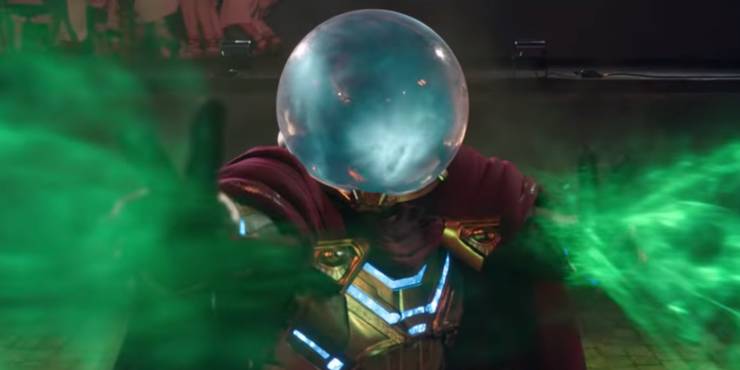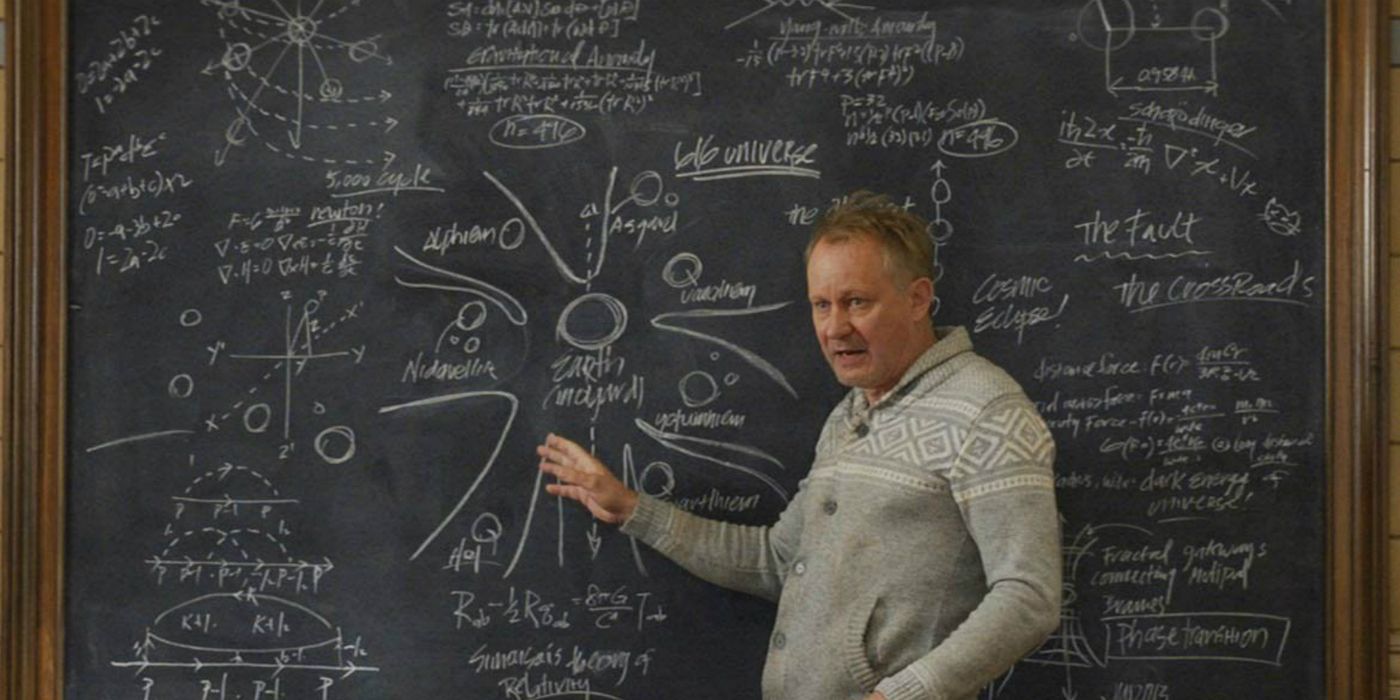The Multiverse In Spider-Man: Far From Home Explained

Warning: MAJOR SPOILERS ahead for Spider-Man: Far From Home.
Mysterio may not have really originated from another dimension in Spider-Man: Far From Home – but the Multiverse is still very much part of the MCU. Quentin Beck was introduced as a supposed hero from another dimension, who claimed he had pursued Elemental creatures from his Earth to the MCU.
According to Mysterio, the events of Avengers: Endgame damaged the fabric of reality itself, opening the MCU up to the wider Multiverse. Mysterio said he came from Earth-833, a reality that doesn’t have a Spider-Man, where his world was ravaged and ultimately destroyed by the Elementals. The would-be sorcerer explained that he followed the Elementals to the MCU, which he refers to as Earth-616, in order to prevent them destroying another Earth.
All this was disclosed in the Spider-Man: Far From Home trailers, and it left viewers utterly divided. Some argued that Mysterio is hardly a reliable source; in the comics, Mysterio is a villain well known for his extravagant tricks. Others pointed out that the MCU had been teasing the Multiverse for years, and suggested this was a logical direction for Marvel’s shared universe to go. So what part does the Multiverse actually play in Spider-Man: Far From Home? It’s more complicated than you think.
Mysterio’s Multiverse Was A Lie

The simple truth is that everything Mysterio said about the Multiverse in Spider-Man: Far From Home was a lie. In reality, Quentin Beck was a down-on-his-luck scientist who formerly worked for Stark Industries (he developed B.A.R.F.), and had become frustrated at the fact men like Tony Stark got all the glory. He and several other disgruntled former Stark employees had banded together to create an elaborate hoax in order to win the fame and acclaim they believed they deserved. Together, the team used holographic projections and weaponized drones to simulate the four Elementals, and concocted a crazy but tragic backstory that explained why the Mysterio character suddenly appeared on the scene.
It was a perfect lie, not least because Mysterio didn’t claim to be a scientist himself. As a result, he could wave away any complicated questions – say, about the origins of the Elementals, or else about how he’d jumped between the dimensions himself – by simply explaining that his technical allies had handled all that. Much to Mysterio’s delight, the fake origin story also proved to have a particular appeal to Spider-Man, with Peter Parker excitedly discussing the cosmological implications of the Multiverse.
That means everything Mysterio claimed – the existence of parallel Earths include 833, the MCU being Earth-616, and the impact of the snap – is false. However, it doesn’t mean there isn’t a Multiverse.
The MCU Multiverse Does Still Exist

Ironically, although Mysterio doesn’t originate from another dimension, most of what he said about the Multiverse is actually true in the MCU. The MCU first began teasing the Multiverse in the Thor films; one key scene in Thor: The Dark World saw Dr. Erik Selvig, the noted astrophysicist then consigned to a mental institution, jotting notes about the Multiverse on a chalkboard. The notes included a lot of real-world scientific jargon associated with theories about the Multiverse, as well as references to Marvel-specific concepts such as the 616 universe, the Nexus of All Realities, and two-dimensional gateways from the comics called the Fault and the Crossroads. Following on from that, the Grandmaster’s Tower in Thor: Ragnarok confirmed that a Marvel character known as the Man-Thing had been one of the Grandmaster’s previous Champions. In the comics, the Man-Thing is the guardian of the Nexus of All Realities, a powerful being strongly associated with the Multiverse.
The Multiverse has been actually explored in both the Ant-Man and the Doctor Strange franchises. In the case of Ant-Man, the Quantum Realm is a mysterious plane of existence where the laws of time and space break down; it’s typically accessed by shrinking to a subatomic size, and it’s even inhabited, with Ant-Man & the Wasp giving a glimpse of a mysterious city. Doctor Strange revealed that this is only one of countless dimensions; that film features a so-called Magical Mystery Tour in which Stephen Strange’s astral form was blasted across the Multiverse by the Ancient One. The movie ended with Doctor Strange entering the Dark Dimension, yet another plane of existence.
Most recently, the Multiverse played a major role in Avengers: Endgame, which is one reason many viewers were inclined to believe Mysterio in the first place. In Endgame, Earth’s surviving heroes traveled back to the past on a “Time Heist.” Their goal was to steal the Infinity Stones from history, take them to 2023, and use them to reverse the snap. According to the Ancient One, though, every time the Avengers took an Infinity Stone they unwittingly created a new timeline where events had played out differently. This fitted with Avengers: Infinity War, where Doctor Strange had used the Time Stone to explore over 14 million different futures – indicating timelines existed where every one of those futures played out.
Not only does the Multiverse exist, but it’s has nearly infinite possibilities, with worlds different from the MCU in subtle ways, to totally hostile dimensions.
The Multiverse’s Future In MCU Phase 4

This background neatly explains why Mysterio’s tale was so seductive a lie; because it strongly resembled the truth. And although the Multiverse didn’t feature in Spider-Man: Far From Home, future Marvel films will definitely deal with it.
Marvel’s finally working on Doctor Strange 2, and the Masters of the Mystic Arts are all about the Multiverse; their role is to protect this plane of reality from other-dimensional incursions. Director Scott Derrickson has frequently mentioned his interest in the Nightmare Realm, a place where every fear is made manifest. If the Nightmare Realm is indeed about to invade the MCU, then Doctor Strange is in trouble; he’s lost his most powerful weapon, the Time Stone.
It’s uncertain whether or not there’ll be an Ant-Man 3; if Marvel do make on, it’s sure to explore the Quantum Realm in even more detail. Even if there isn’t, the concepts and ideas Marvel played with in Avengers: Endgame will be revisited elsewhere. The MCU’s model of temporal mechanics is uncertain right now, but at least one of the alternate realities created by the Avengers still exists; a timeline in which Loki escaped Earth with the Tesseract in 2012. That’s clearly a way of bringing Loki back after his death in Avengers: Infinity War, meaning it’s safe to say there’s going to be some actual, non-faked interdimensional travel in the MCU’s future.
Oddly, then, Spider-Man: Far From Home means the MCU has to tread very carefully now when it comes to the Multiverse. The idea has been introduced and then apparently debunked, which will naturally mean viewers will be more skeptical when they encounter it again. Fortunately, all that may be needed is a single film treating it seriously in order for audiences to move on; Doctor Strange 2 should do the job, and then the unlimited story potential of the Multiverse will be opened up once again.
About The Author


















